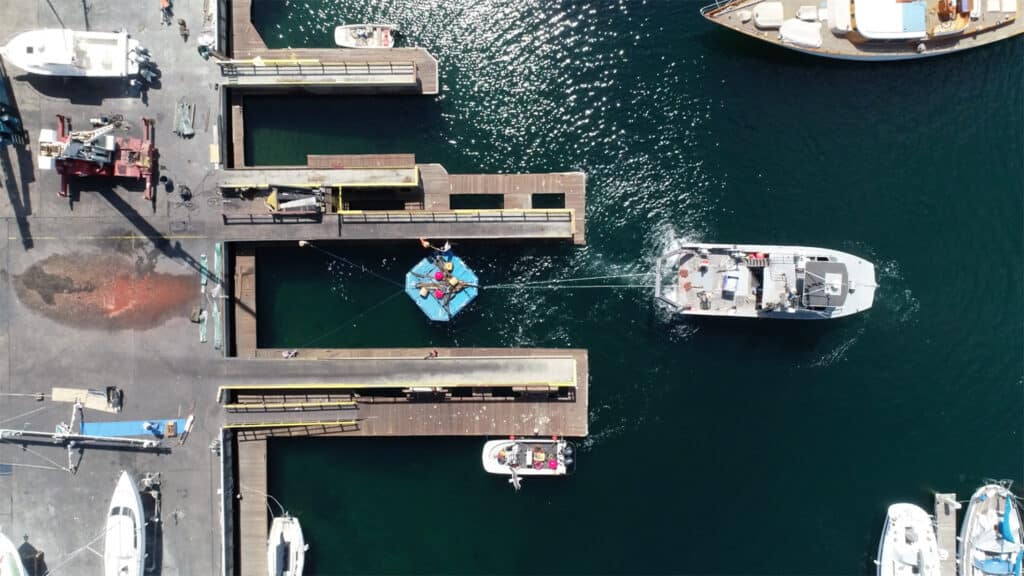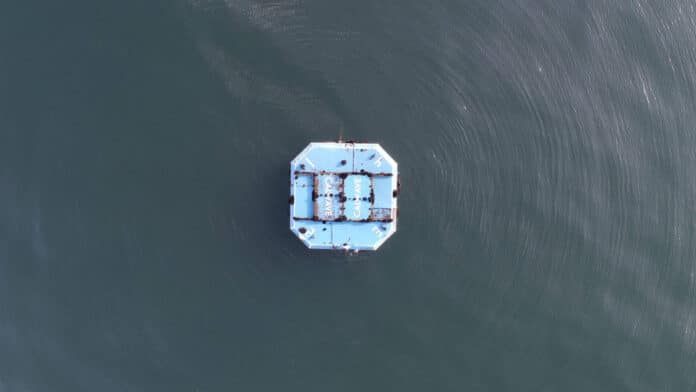Wave energy is an infinite, reliable source of zero-emission electricity. The point is that we must learn to extract it efficiently, safely, and practically without stumbling over cost, corrosion, wildlife impacts, and other hurdles.
The latest outfit to give it a try is the startup CalWave Power Technologies. CalWave has been working on its xWave clean energy technology for many years now and has announced the successful completion of its open-ocean wave energy pilot after 10 months of continuous operation off the coast of San Diego.
The project, which was deployed in September 2021, was supported by a U.S. Department of Energy (DOE) award with the goal of demonstrating CalWave’s scalable and patented xWave technology as a cost-effective, sustainable solution for energy generation.
The company behind the experiment believes “ocean waves are 20-60 times more energy-dense, predictable, and consistent compared to other forms of renewable energy. They are available at night and during winter.” CalWave’s patented technology converts this energy to electricity, equipping coastal communities with clean, reliable, and local energy while keeping our planet and the health of future generations in mind.

The demonstration represents California’s first at-sea, long-duration wave energy project. The pilot device, named x1, has now been recovered and decommissioned, and the findings will be used to inform CalWave’s next grid-connected deployment. The next test is scheduled to occur at the federally-approved, 20-MW PacWave wave energy test site off the coast of Newport, Oregon.
CalWave noted that its wave energy device achieved high performance as targeted and predicted by CalWave’s advanced and laboratory-validated hydrodynamic simulations. The onboard controller took over full autonomous operations for roughly 80% of the operating time, ensuring high performance and shutdown during storms, leading to over 99% system uptime throughout the deployment. The architecture enables the technology to survive several major storms, including two representatives of the largest storms in a typical 10-year period for a utility-scale system.
Based on the reliability of the system and zero interventions during operations, the deployment was extended from six to 10 months and concluded as required by CalWave’s U.S. DOE contract. The results of this pilot are critical for the advancement of CalWave’s x100 and x800 utility-scale classes of the xWave.
“Marine energy technologies – like CalWave’s xWave – hold incredible potential to help transform our energy system in numerous ways, from serving as a resource on our nation’s grid to helping remote and coastal communities reduce their reliance on fossil fuels to powering ocean exploration and observation systems,” said Jennifer Garson, U.S. Department of Energy’s Water Power Technologies Office Director. “CalWave’s successful deployment in California marks a critical step in their pathway to commercializing their wave energy system and is an important step forward in the marine energy industry’s efforts to demonstrate and deploy these technologies.”
In January 2022, CalWave was awarded the single largest award of $7.5 million from the U.S. Department of Energy’s latest $25 million commitment to accelerate ocean energy development to further develop their xWave technology for use on local energy grids and microgrids. The company has been contracted to build a 100 kW version of the xWave architecture for a two-year deployment off the coast of Oregon at PacWave South, the nation’s first accredited, grid-connected, pre-permitted wave energy test facility.
